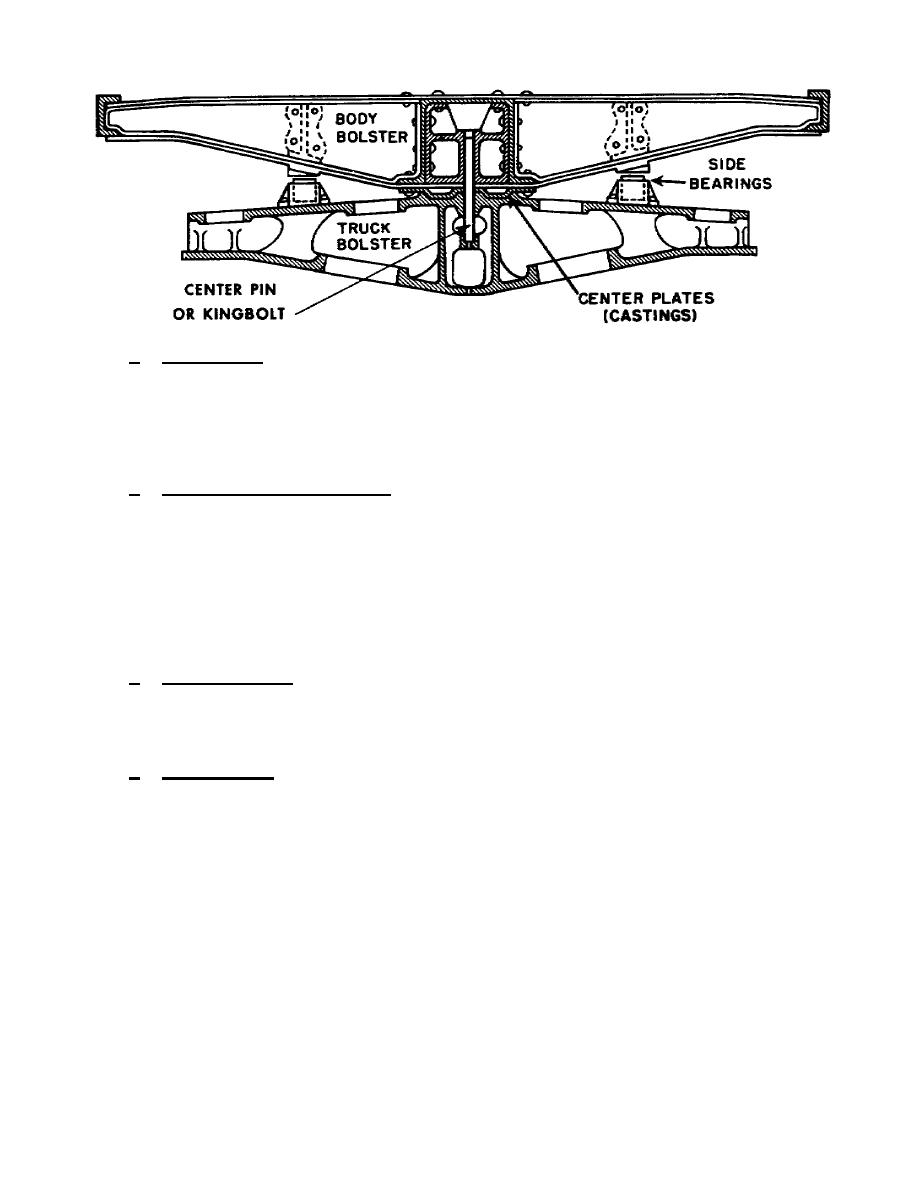
b. Side frame. On the outside of the truck wheels is the side frame;
it extends from one axle to the other and forms the side of the truck. The
two side frames on each truck contain sets of coil springs upon which the
truck bolster sits. The springs distribute the car's weight equally through
the side frames onto the axle journals located at each end of the side
frames.
c. Wheel and axle assembly. A combination of two axles and four wheels
make up a wheel and axle assembly for a general freight car. Each axle has
two wheels that are pressed upon the axle under pressure ranging from 70 to
150 tons. For some passenger equipment and highspeed freight cars,
however, the wheel and axle assembly consists of three axles and six wheels.
But on either the general or the other types of freight cars, the ends of
the axles or journals are highly polished and extend into journal boxes, to
provide a working surface for the bearings and a means for lubricating the
axle and bearing.
d. Brake rigging. The cylinder, piston, rods, and levers necessary to
transmit air pressure to the brakeshoes and wheels are included in the brake
rigging. Each car has an independent braking system, powered by compressed
air supplied by a compressor located on the locomotive.
e. Journal box. An important component of the truck assembly is the
journal box; it encloses the bearing and wedge assembly, the axle journal,
and necessary waste packing or lubricator pad, and lubricant. One box is
located at each end of each axle. They require more maintenance than any
other part of a railway car. The journal boxes provide for the lubrication
of the axles and bearings. A typical journal box assembly, shown in figure
3.3, contains the components described next.
42



 Previous Page
Previous Page
